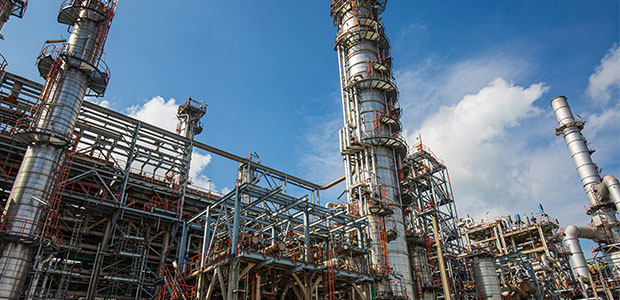
Where are the Officers? OHS Officers Absent at Canadian Refinery Lockout
Since the lockout at a Co-op refinery began on Dec. 5, the provincial labour ministry has not received any reports of injuries or dangerous occurrences. Yet, OHS officers have not visited the Regina refinery since the lockout began.
Nearly 37 days since the lockout began at a Co-op Refinery Complex in Regina, Canada, Occupational Health and Safety (OSH) officers are nowhere to be found, despite safety concerns raised by a professor and the union.
Environmental inspectors have also been absent up to this point even though the Environmental Ministry has received reports of two spills (not regarded as emergencies). In fact, OHS authorities have not been on the site since their initial visit on Dec. 3, two days before the start of the lockout, said a spokesperson for the Ministry of Labour Relations and Workplace Safety.
The lockout began on Dec. 5 at 5:30pm when a “blue security fence closed to block off the entrance at almost precisely that time. CRC gave 48-hour lockout notice on Tuesday [of that week] in response to Unifor Local 594’s 48-hour notice of job action that same day.”
The president of Unifor 594, Kevin Bittman, announced later that workers would be outside picketing for their pensions, which have become the main sticking point in negotiations.
“Everybody’s ready to go,” Bittman said. “Nobody’s scared and everybody’s ready to protect our pension security.”
He was right. Members got to the site around 4:30pm that day and watched managers arrive carrying suitcases. Management has pledged to keep the refinery running despite the lockout and set up a work camp to shelter hundreds of staff and replaced workers.
“We work outside all day long, so the cold’s not going to hurt us,” he said. “Those people are away from their families. They’re locked into the plant. They’re doing jobs that they’re not trained for. It’s a scary situation for them. It’s mental anguish.”
However, refinery operations and Unifor did not seem to see it that way.
“The only way we can ensure a safe operating environment is to lock the Union out and have our management team assume the safe operation of the Refinery,” said a statement attributed to Gil Le Dressay, vice-president of refinery operations.
“We simply can’t run the risk of employees conducting rotating strikes and walking off the job in our safety-sensitive operating environment.”
Managers have insisted that the refinery will operate safely during the lockout, saying everyone filling in is property trained and certified for their tasks.
But Bittman isn’t so sure. He said his members have years of experience that can’t be replaced.
And picketing so close to the refinery is not without its concerns. He thinks the rally would be well within the blast radius if something, God forbid, were to go terribly wrong.
“We’re out here on the outside of the fence while people live inside a camp to do our jobs,” he said. “We all know there’s only one way to safely run the refinery and that is with us on the inside.”
Yet, since the lockout, OSH and Environmental officials have not been on the scene. Officers plan to only make unannounced and unscheduled visits “every five to eight weeks as they normally would.”
And since the lockout began, the setting has remained safe. There have been no reported serious injuries, fatalities or dangerous occurrences.
Still, some aren’t so sure the refinery is ‘safe’ given that most employees are picketing outside. Scott Doherty, assistant to the national president of Unifor, said there is value behind the union’s argument that only its experienced members can operate the refinery safely. He isn’t convinced there haven’t been any incidents. He’s not even sure if anyone has gone and inspected it.
Doherty argued it’s “not appropriate” for OHS to take such a business-as-usual approach to inspections in the midst of a lockout. “You would think that government agencies would at least pay a visit to make sure that things are being done properly,” he said.
However, the refinery’s director of health, safety, security and environment countered in a statement that the refinery is operating “safely and reliably.”
But the safety of the refinery is not all that people are worried about. Sean Tucker is a professor who researched occupational health and safety at University of Regina, and he has raised concerns in the past about fatigue and inexperience as hundreds of managers and replacement workers fill in for unionized staff—even though the refinery has insisted everyone on site is properly trained.
Tucker thinks officers should be checking in more frequently, and he resisted the idea that OHS officers should just follow their established routine. He also acknowledged, though, that the ministry is in a difficult position, as it probably wants to avoid the perception of taking sides. Attending the refinery every day could send a message to both the union and the public.
“I think having a physical presence on site once a week would be appropriate given the circumstances,” he said.
Something really bad could happen if there was a serious incident at the refinery during the lockout and it came to be that the regulator was not conducting inspections. That could really affect public confidence in the ministry, he said. Plus, people’s jobs and lives are at stake.